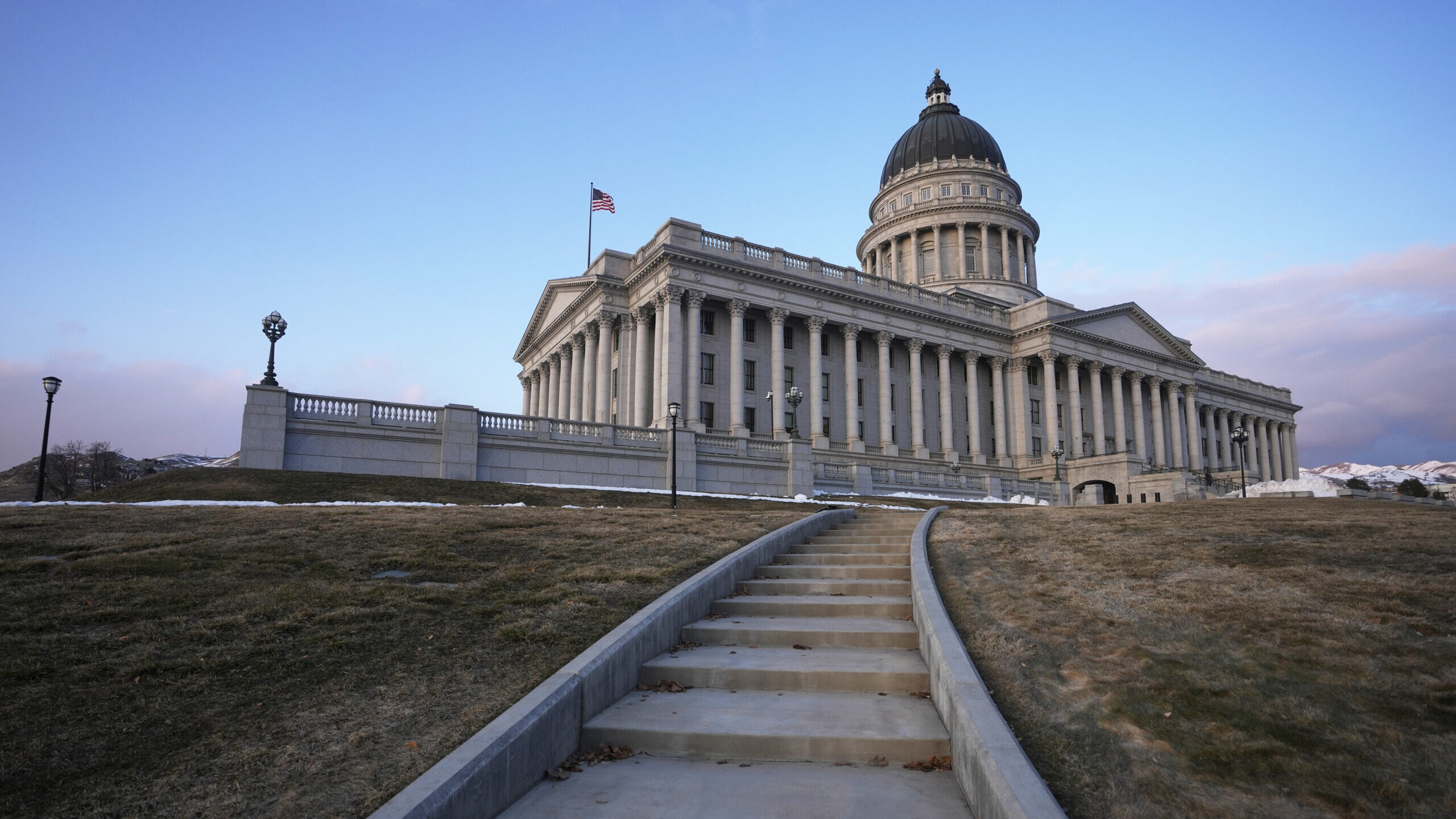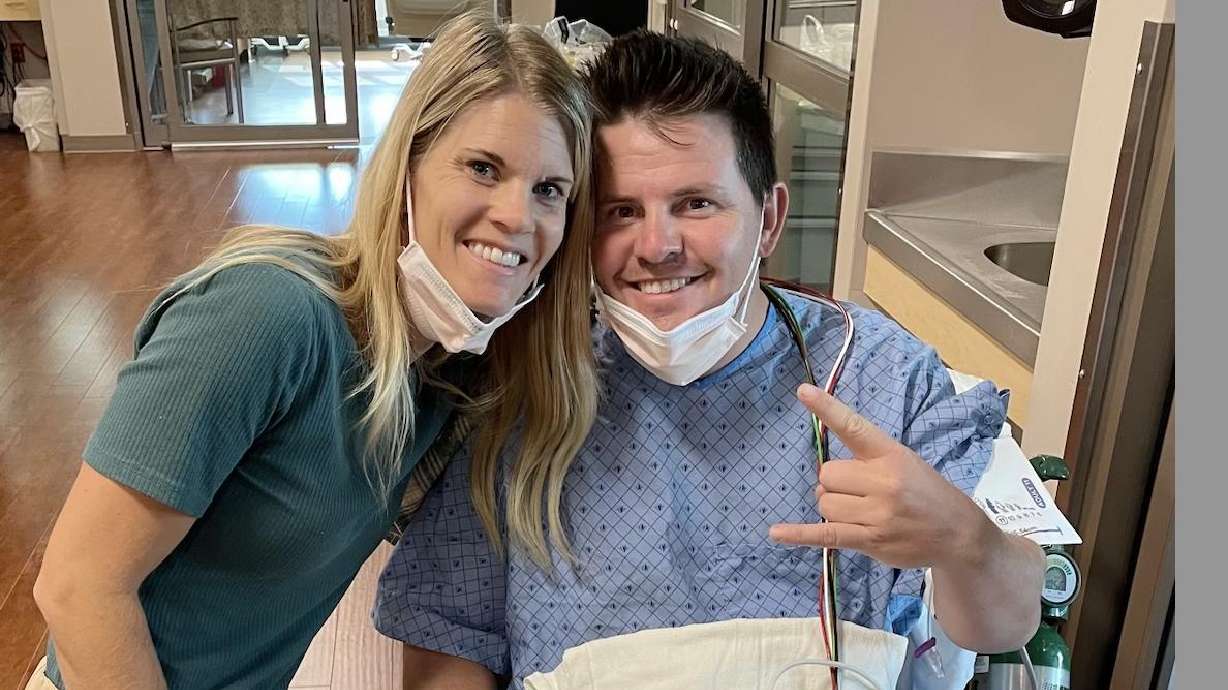Fed slashes rate to near zero, eases lending rules
Mar 15, 2020, 3:14 PM

Federal Reserve Chair Jerome Powell pauses during a news conference, Tuesday, March 3, 2020, while discussing an announcement from the Federal Open Market Committee, in Washington. In a surprise move, the Federal Reserve cut its benchmark interest rate by a sizable half-percentage point in an effort to support the economy in the face of the spreading coronavirus. Chairman Jerome Powell noted that the coronavirus "poses evolving risks to economic activity." (AP Photo/Jacquelyn Martin)
(AP Photo/Jacquelyn Martin)
WASHINGTON (AP) — The Federal Reserve took emergency action Sunday and slashed its benchmark interest rate by a full percentage point to nearly zero and announced it would purchase more Treasury securities to encourage lending to try to offset the impact of the coronavirus outbreak.
The central bank said the effects of the outbreak will weigh on economic activity in the near term and pose risks to the economic outlook.
The central bank said it will keep rates at nearly zero until it feels confident the economy has weathered recent events.
THIS IS A BREAKING NEWS UPDATE. The AP’s most recent story is below:
The Federal Reserve is all but sure to take its most drastic steps Wednesday since the depths of the 2008 financial crisis to try to counter the coronavirus’ growing damage to the U.S. economy and the financial markets.
With the virus’ spread causing a broad shutdown of economic activity in the United States, the Fed faces a daunting task. Its tools — intended to ease borrowing rates, facilitate lending and boost confidence — aren’t ideally suited to offset a fear-driven halt in spending and traveling.
Still, analysts expect the Fed to try. Some economists say the policymakers, led by Chair Jerome Powell, could cut their already low benchmark interest rate by up to a full percentage point. Not since December 2008 has the central bank announced a rate cut that deep.
The Fed may move even earlier than its scheduled meeting Wednesday. A short-term lending market that many large companies use to access cash, known as the “commercial paper” market, has been hit with far more sellers of debt than buyers. That has caused interest rates for those loans to spike, threatening the ability of larger businesses to borrow.
Mark Cabana, a rates strategist with Bank of America Securities, said that revenues are plummeting for many corporations and they are seeking to sell commercial paper to raise cash.
If they are unable to, they could be forced to lay off workers or even go bankrupt.
The Fed could set up a program to purchase commercial paper, which would lower interest rates in that market and enable it to function.
A full-point cut would return the Fed’s key short-term rate to a range near zero, where it stood for seven years during and after the Great Recession. The central bank may also accelerate its purchases of Treasury bonds to try to smooth trading in that market. Would-be sellers have run into trouble finding enough buyers for all the securities they want to unload.
All told, the Fed’s actions would amount to a recognition that the U.S. economy faces its most perilous juncture since the recession ended more than a decade ago.
“I think the Fed has to bring the big guns,” said Gennadiy Goldberg, senior U.S. rates strategist for TD Securities.
Separately, Treasury Secretary Steven Mnuchin said earlier Sunday that both the central bank and the federal government have tools at their disposal to support the economy.
Many Wall Street analysts expect the Fed will seek to revive some of the tools it used during the 2007-2008 financial crisis, including a commercial paper facility.
Mnuchin also said he did not think the economy is yet in recession. Most economists, however, believe a recession is already here, or will be soon.. JPMorgan Chase predicts the economy will shrink 2% in the current quarter and 3% in the April-June quarter.
“I don’t think so,” Mnuchin said, when asked if the U.S. is in recession. “The real issue is what economic tools are we going to use to make sure we get through this.”
On Saturday, President Donald Trump reiterated his frequent demand that the Fed “get on board and do what they should do,” reflecting his argument that benchmark U.S. rates should be as low as they are in Europe and Japan, where they’re now negative. Negative rates are generally seen as a sign of economic distress, and there’s little evidence that they help stimulate growth. Fed officials have indicated that they’re unlikely to cut rates below zero.
With the virus depressing travel, spending, and corporate investment and forcing the cancellation of sports leagues, business conferences, music performances, and Broadway shows, economists increasingly expect the economy to shrink for at least one or two quarters. A six-month contraction would meet an informal definition of a recession.
Two weeks ago, in a surprise move, the Fed sought to offset the disease’s drags on the economy by cutting its short-term rate by a half-percentage point — its first cut between policy meetings since the financial crisis. Its benchmark rate is now in a range of 1% to 1.25%. Some analysts have forecast that the Fed will reduce its rate by just one-half or three-quarters of a point on Wednesday, rather than by a full point.
But policymakers have largely accepted research that says once its benchmark rate approaches zero, it would produce a greater economic benefit to cut all the way to zero rather than just to a quarter- or half-point above. That’s because it takes time for rate cuts to work their way through the economy. So if a recession threatens, quicker action is more effective.
Some of the attention Wednesday will likely be on what steps the Fed takes to further smooth the functioning of bond markets, a topic that can seem esoteric but that serves a fundamental role in the functioning of the economy. The rate on the 10-year Treasury influences a range of borrowing costs for businesses and consumers, including mortgage and credit card rates. If banks and investors can’t seamlessly trade those securities, borrowing rates might rise throughout the economy.
“Even more important than the Fed’s rate-cutting function is the market-calming function,” said David Wilcox, a senior fellow at the Peterson Institute for International Economics and former head of research at the Fed.
The central bank took a huge step in that direction Thursday, when it said it would provide $1.5 trillion of short-term loans to banks. The central bank will provide the cash to interested banks in return for Treasuries. The loans will be repaid after one or three months.
That program is a response to signs that the bond market has been disrupted in recent days as many traders and banks have sought to unload large sums of Treasurys but haven’t found enough willing buyers. That logjam reduced bond prices and raised their yields — the opposite of what typically happens when the stock market plunges.
The Fed also said last week that it would broaden its $60 billion monthly Treasury purchase program, launched last fall, from just short-term bills to all maturities. The Fed is already reinvesting $20 billion from its holdings of mortgage-backed securities into Treasuries of all durations, thereby bringing its total purchases to $80 billion.
Those purchases would help relieve banks of the Treasuries they want to sell. Some analysts expect the Fed to extend those purchases past their current end-date of the second quarter and even vastly increase the size.
Guy LeBas, chief fixed income strategist for Janney Capital Management, said the Fed could boost its purchases to up to $1 trillion or more over the next year. The goal wouldn’t be to directly stimulate the economy, as the Fed did with its bond purchases during and after the recession, LeBas said. Those purchases were known as “quantitative easing” or QE.
Rather, the idea would be to take more Treasuries off banks’ balance sheets. That, in turn, would boost banks’ cash reserves and enable them to lend more. Still, most economists would likely refer to the purchases as QE.
“Shifting hundreds of billions of dollars of assets quickly doesn’t happen without central bank intervention,” LeBas said.
Another option would be to relaunch a program that lets banks use corporate bonds and other securities as collateral to borrow from the Fed.
On Wednesday, the Fed’s policymakers will also update their forecasts for the economy and for interest rates. Economists at Pimco predict that the Fed’s policymakers will collectively downgrade their estimate for growth this year from 2% to below 1.5%. That figure would be consistent with an economic contraction in the first half of the year, followed by a sharp rebound, Pimco said.













